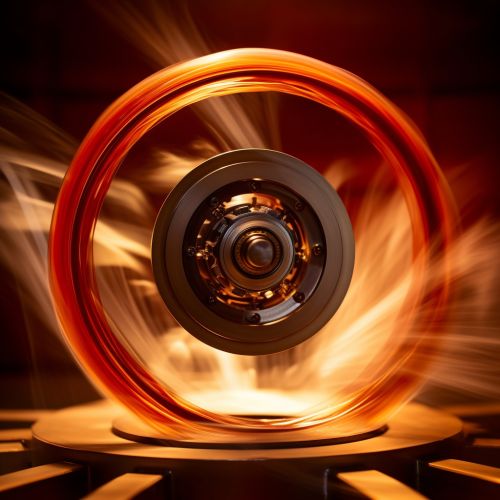Flywheel energy storage
Introduction
Flywheel energy storage (FES) is a method that stores energy mechanically in the form of kinetic energy. This is achieved by spinning a flywheel, which is essentially a mechanical device that efficiently stores rotational energy. FES systems use electric energy to drive the flywheel's motor, converting the electric energy into mechanical energy.
Principle of Operation
The basic principle of a flywheel energy storage system is the conversion of electrical energy into mechanical energy, which is stored in the form of rotational kinetic energy. This energy can be retrieved by converting it back into electrical energy. The main components of a FES system include the flywheel, the motor/generator, and the power electronics.
Flywheel
The flywheel is the central component of the FES system. It is a rotating mechanical device that is used to store and release energy. The energy is stored as kinetic energy in the rotating mass. The amount of energy stored is proportional to the square of the flywheel's rotational speed and its moment of inertia.


Motor/Generator
The motor/generator in a FES system serves a dual purpose. When electrical energy is being stored, it acts as a motor, driving the flywheel to spin and store energy. When energy is being retrieved, it acts as a generator, converting the mechanical energy of the spinning flywheel back into electrical energy.
Power Electronics
The power electronics in a FES system manage the flow of electrical energy in and out of the system. They convert the incoming AC power into DC power to drive the motor, and convert the DC power generated by the flywheel back into AC power for use.
Applications
Flywheel energy storage systems have a wide range of applications. They are used in uninterruptible power supply (UPS) systems, where they provide short-term power when the main power source fails. They are also used in power quality applications, where they help to smooth out fluctuations in power supply. In addition, FES systems are used in renewable energy systems, where they help to store excess energy produced by wind turbines or solar panels.
Advantages and Disadvantages
Like all energy storage methods, flywheel energy storage has its advantages and disadvantages. One of the main advantages is that FES systems have a high power density, meaning they can deliver a large amount of power in a short time. They also have a long lifespan and require little maintenance. However, one of the main disadvantages is that FES systems have relatively high upfront costs. They also require a lot of space and can be noisy.
Conclusion
In conclusion, flywheel energy storage is a versatile and efficient method of storing energy. While it does have its drawbacks, its advantages make it a valuable tool in a variety of applications.
